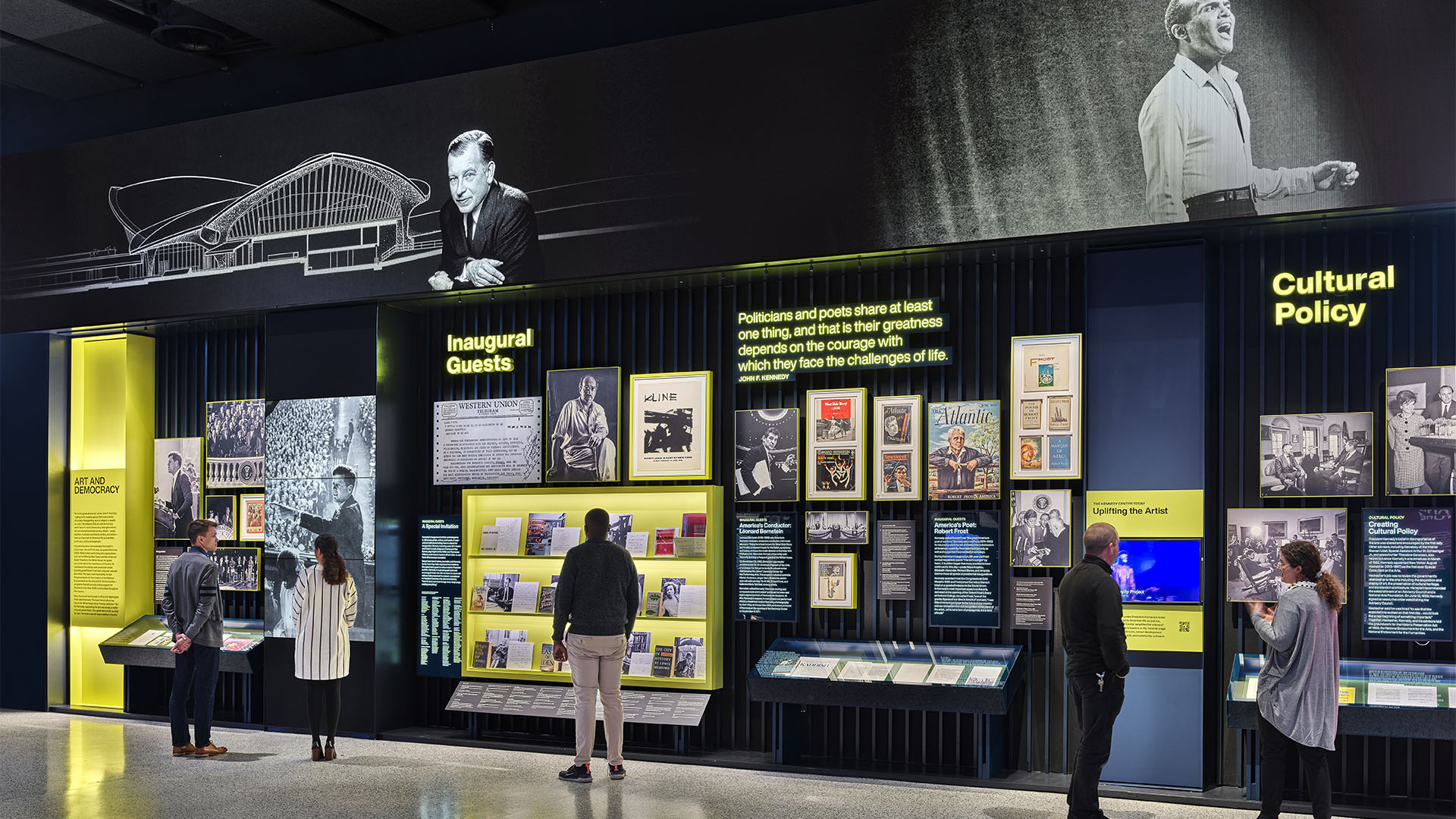Art and Ideals: President John F. Kennedy
The John F. Kennedy Center for the Performing Arts in Washington, DC, marked its 50th anniversary season this year with the opening of “Art and Ideals: President John F. Kennedy,” a permanent, multi-media exhibition that uses the power of film, photography, and design to describe how the Kennedy White House elevated the role of the arts in American life. Under the creative direction of Pentagram’s Abbott Miller, the exhibition achieves a unique synthesis of original artifacts, media, interaction, and sound to provide a vivid, immersive, and theatrical experience.
Agency
Practice Area
Client
The John F. Kennedy Center for the Performing Arts
Industry
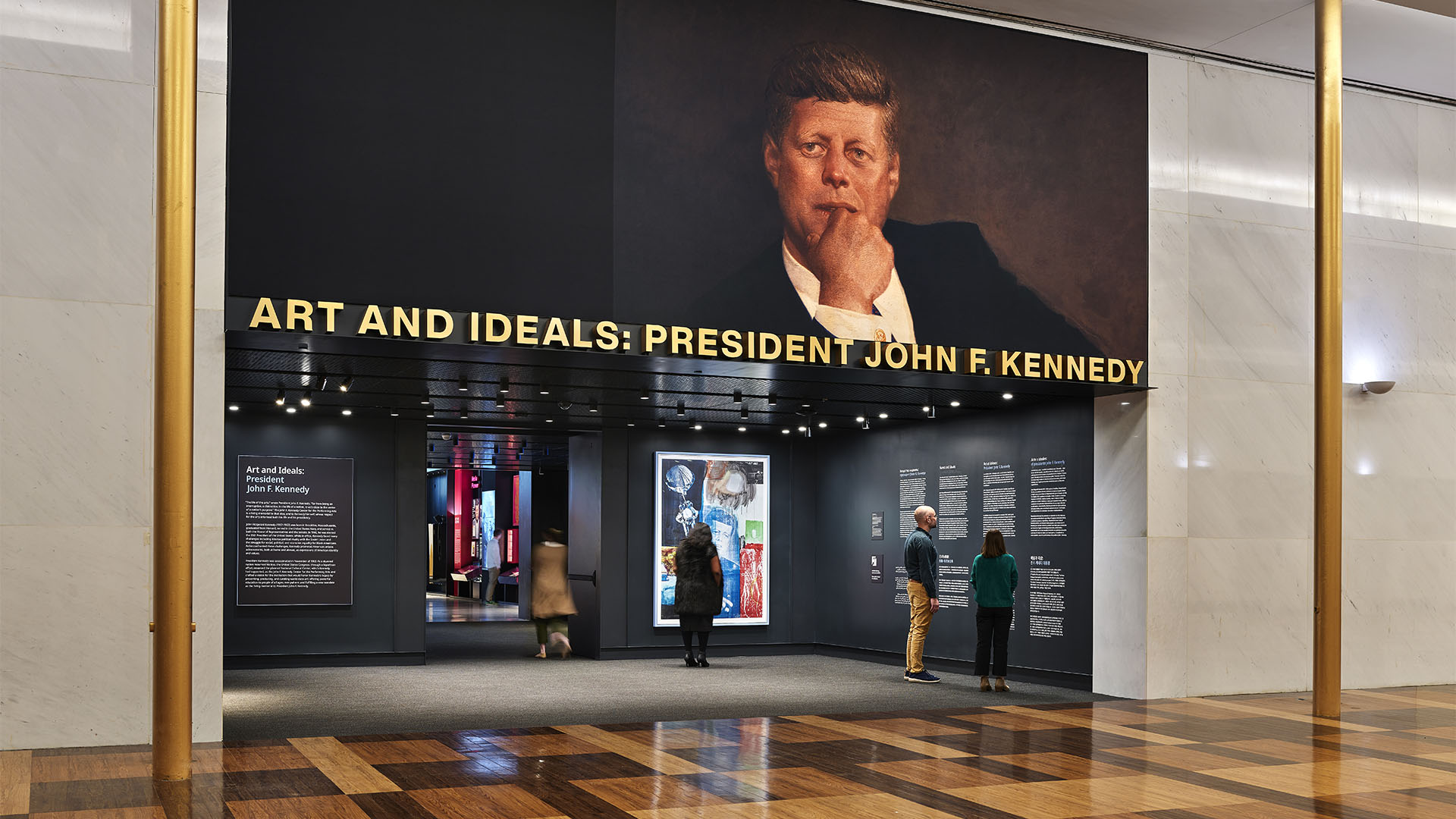
The Challenge
As a living memorial to John F. Kennedy, the Kennedy Center actively seeks new ways to embody its namesake’s ideals, honor his legacy, and celebrate his commitment to the arts. For the first time in the Center’s history, the exhibition provides an interpretive space that explores John and Jacqueline Kennedy’s connection with the literature and the performing and visual arts, reminding visitors of the importance of creative expression to a democratic society.
Project Vision
The development of the exhibition project coincided with a dramatic renovation of the 7,500 sq. ft. space led by architecture firm KieranTimberlake. Ileen Sheppard Gallagher worked on the content development of the exhibition, which was coordinated with an advisory committee of five leading U.S. historians, including Annette Gordon-Reed, Scott Sandage, Peniel Joseph, Penny von Eschen, and Fredrik Logevall, author of the recent two-volume biography of JFK.

Alan Karchmer/OTTO
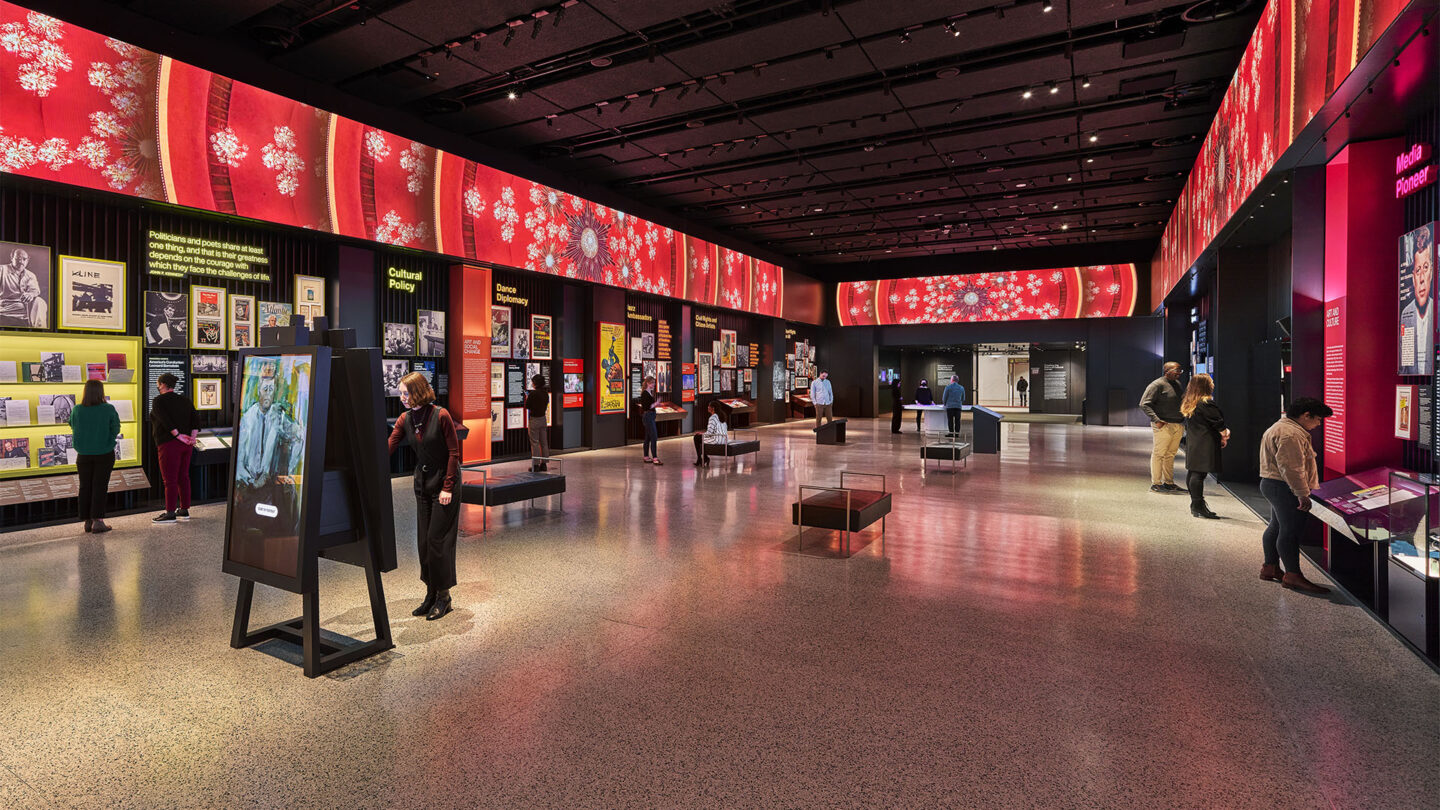
Alan Karchmer/OTTO
Design + Execution
Located on the terrace level of the original Edward Durell Stone building, the exhibition is divided thematically into distinct areas that consider the arts as an expression of democracy, the capacity of art to inspire social change, the role of artists, writers, musicians, and designers in the White House, and the Kennedy’s awareness of the power of media and imagery in redefining a modern presidency.
Kennedy’s most important contributions as president are most vividly conveyed in a series of historic speeches. The exhibition team understood the importance of hearing and seeing his speeches as one of the most powerful and experiential ways to understand his legacy. Within the 22-foot-high interior, a continuous architectural frieze circles the interior, creating a dramatic platform for witnessing his speeches, amplifying content from the exhibition, and showcasing the life of the Kennedy Center. The media within the exhibition was developed in collaboration with Batwin + Robin Productions and is seamlessly choreographed as an extension of the exhibition design and the approach to graphics.
A series of three interactive experiences were developed with TheGreenEyl’s Richard The and his team. “Dinner at the White House” features a dining room table with a series of touchscreen “plates” that allow visitors to see who the Kennedy’s invited and curate their own present-day luminaries. A dramatic wall display called “The Power of Words” presents keywords from landmark Kennedy speeches that coalesce to form sentences as people approach. “Dynamic Portraiture” is based on an historic portrait of Kennedy by the painter Elaine de Kooning. Visitors create digital self-portraits that reflect de Kooning’s distinctive style and palette.
At the opening ceremony on September 8, Miller participated in a panel discussion with Kennedy Center President Deborah F. Rutter and historian Fredrik Logevall, moderated by Kennedy Center Chairman David Rubenstein. Rose Kennedy Schlossberg and second gentleman Douglas Emhoff were in attendance, and the event featured a performance by the renowned cellist Yo-Yo Ma, who, as a 7-year-old prodigy, played for President Kennedy at “An American Pageant of the Arts,” a 1962 fundraiser for the National Cultural Center that would later become the Kennedy Center. At the ribbon-cutting for the exhibition, Yo-Yo Ma performed a Catalan folk song called “Song of the Birds,” a piece that had been performed at the White House by Pablo Casals in 1961. Casals, a Catalan and Puerto Rican, refused to play in countries that recognized the Franco government, but he made an exception because of his admiration for Kennedy.
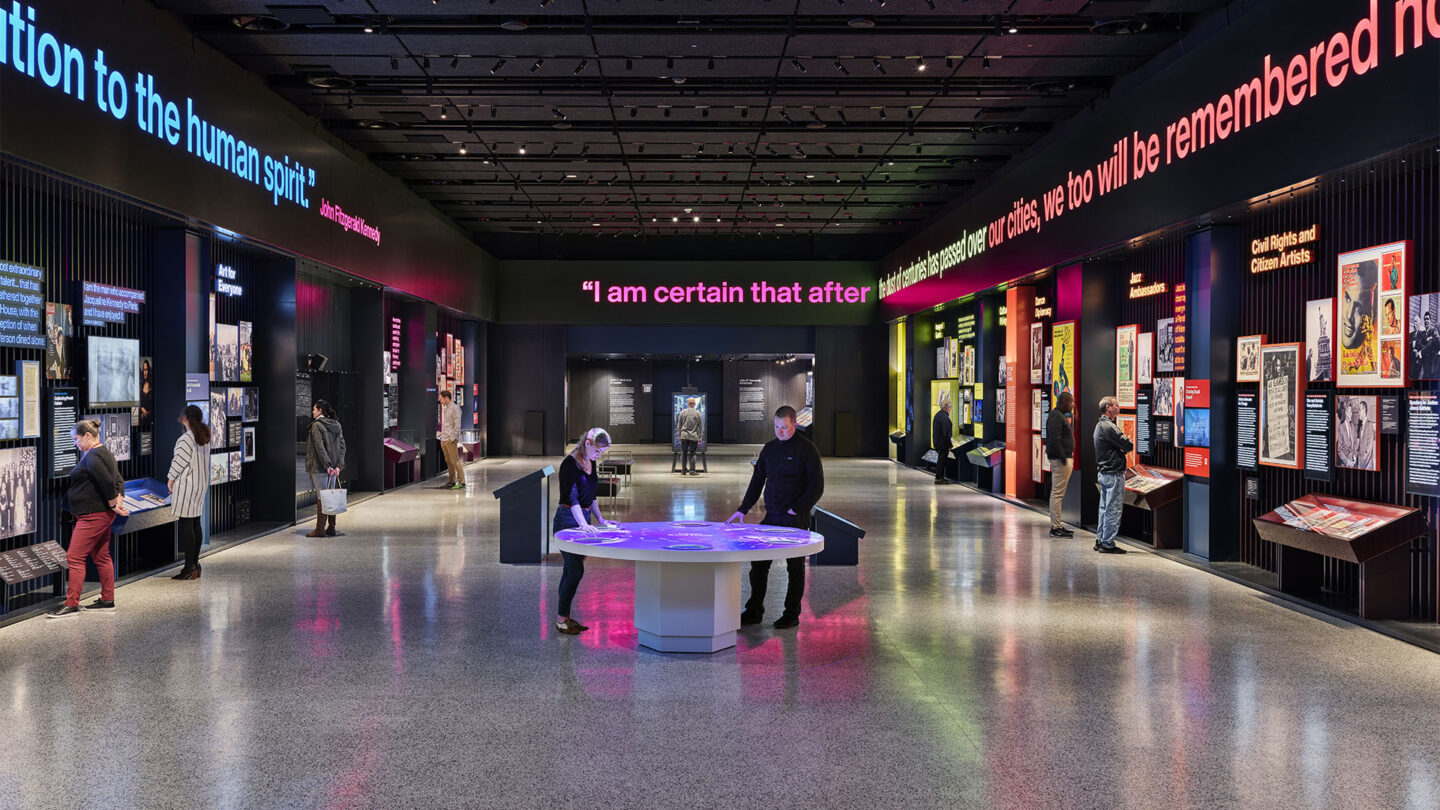
Alan Karchmer/OTTO
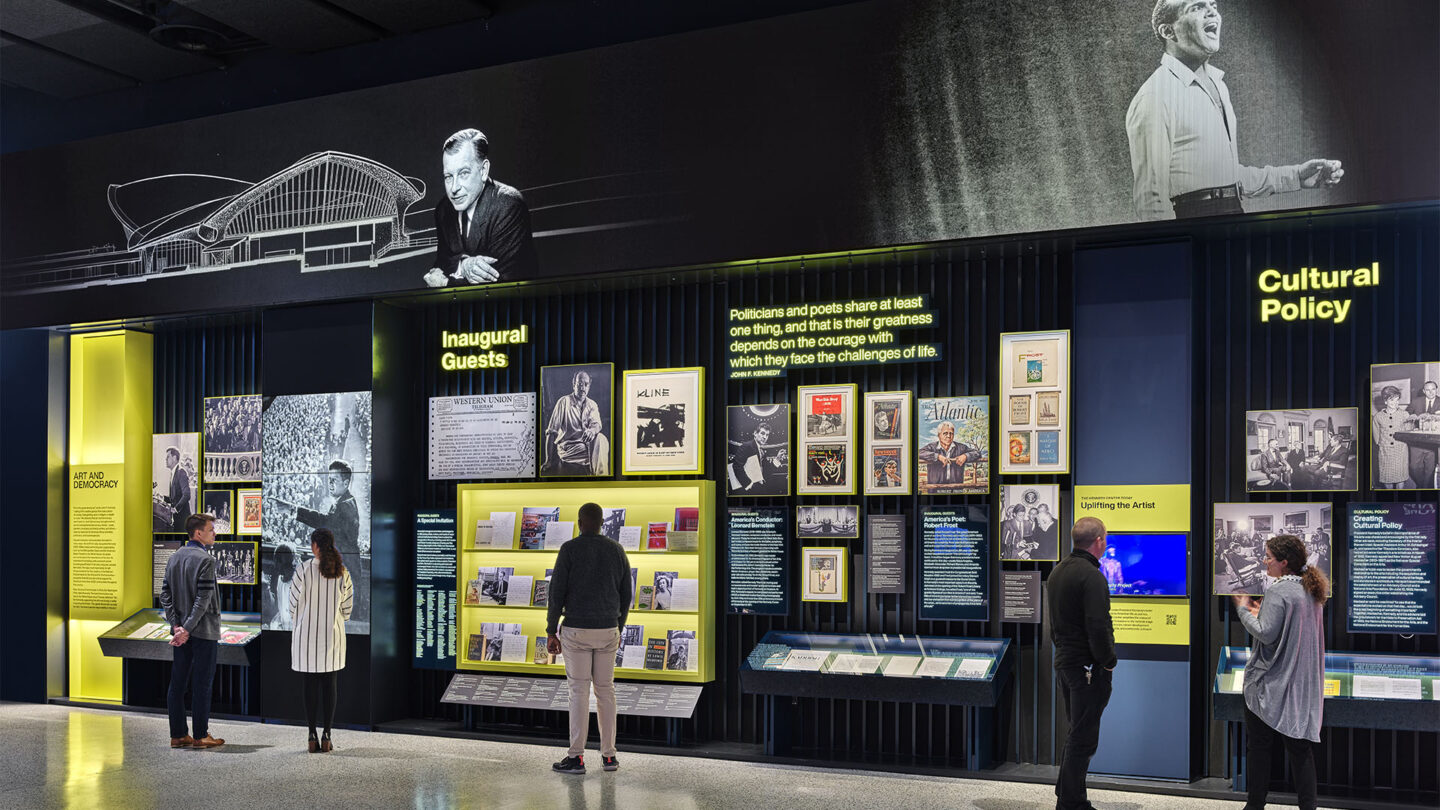
Alan Karchmer/OTTO

Alan Karchmer/OTTO

Alan Karchmer/OTTO
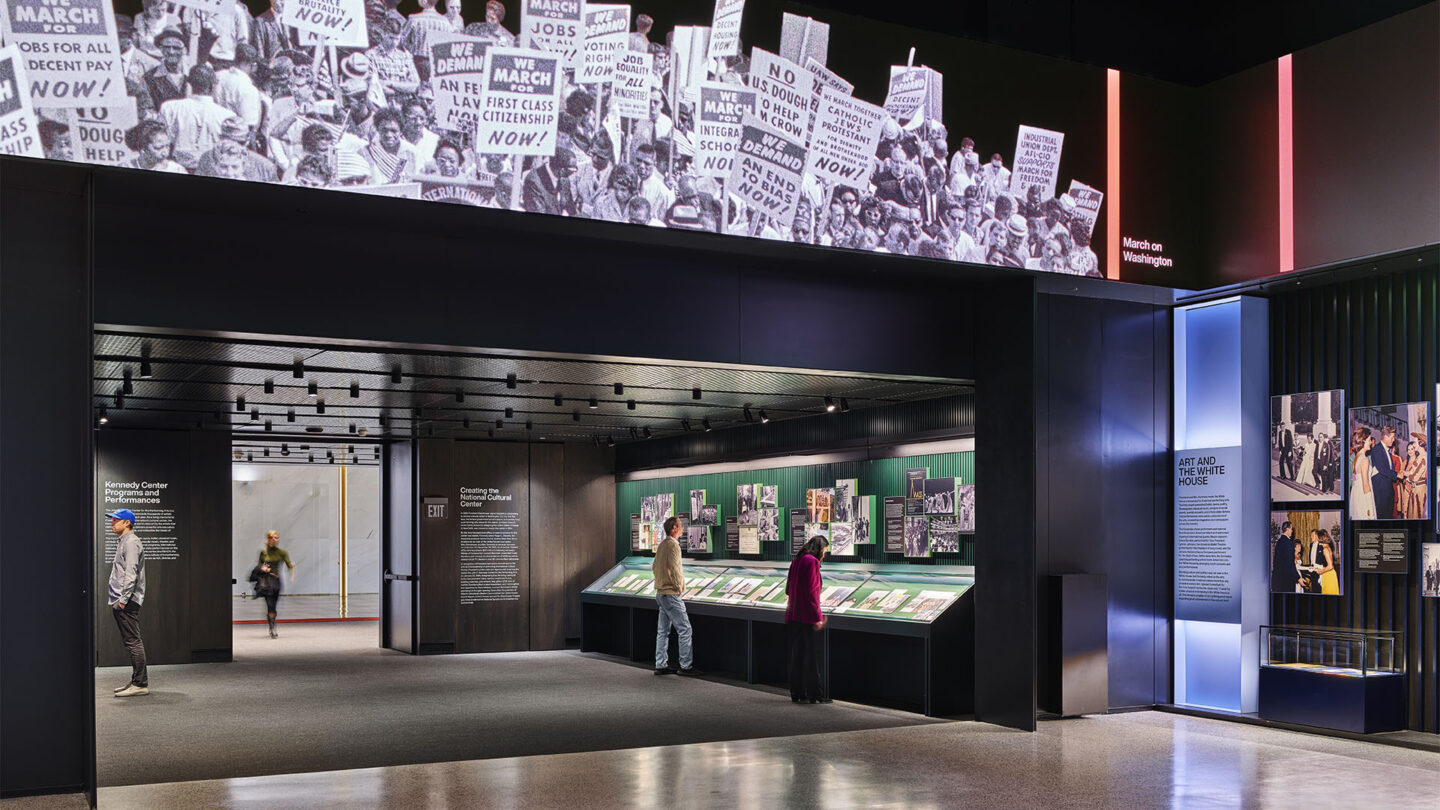
Alan Karchmer/OTTO
Project Details
Design Team
Pentagram
Photo Credits
Alan Karchmer/OTTO
Open Date
September 17, 2022



